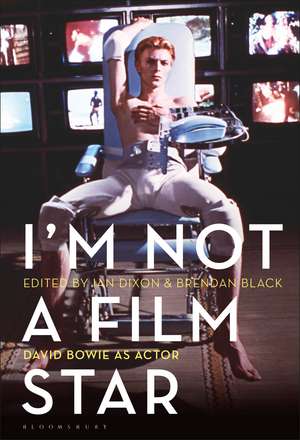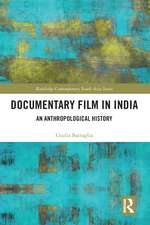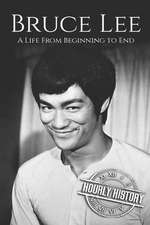I’m Not a Film Star: David Bowie as Actor
Editat de Ian Dixon, Brendan Blacken Limba Engleză Paperback – 21 feb 2024
| Toate formatele și edițiile | Preț | Express |
|---|---|---|
| Paperback (1) | 193.62 lei 6-8 săpt. | |
| Bloomsbury Publishing – 21 feb 2024 | 193.62 lei 6-8 săpt. | |
| Hardback (1) | 600.15 lei 6-8 săpt. | +128.46 lei 10-14 zile |
| Bloomsbury Publishing – 10 aug 2022 | 600.15 lei 6-8 săpt. | +128.46 lei 10-14 zile |
Preț: 193.62 lei
Nou
Puncte Express: 290
Preț estimativ în valută:
37.05€ • 38.79$ • 30.66£
37.05€ • 38.79$ • 30.66£
Carte tipărită la comandă
Livrare economică 05-19 aprilie
Preluare comenzi: 021 569.72.76
Specificații
ISBN-13: 9781501370489
ISBN-10: 1501370480
Pagini: 336
Ilustrații: 56 bw illus
Dimensiuni: 152 x 229 x 25 mm
Greutate: 0.45 kg
Editura: Bloomsbury Publishing
Colecția Bloomsbury Academic
Locul publicării:New York, United States
ISBN-10: 1501370480
Pagini: 336
Ilustrații: 56 bw illus
Dimensiuni: 152 x 229 x 25 mm
Greutate: 0.45 kg
Editura: Bloomsbury Publishing
Colecția Bloomsbury Academic
Locul publicării:New York, United States
Caracteristici
Contributors vary in their methodologies, utilizing philosophical, phenomenological, performative, historical, celebrity studies, theatrical and cinematic theoretical perspectives
Notă biografică
Ian Dixon completed his PhD at The University of Melbourne, Australia, in 2011 and currently lectures at Nanyang Technological University, Singapore. Ian publishes on Bowie, celebrity studies, cultural studies and film theory and delivers academic papers internationally. He also acts and directs for film and television and writes funded screenplays and novels.Brendan Black is a Melbourne, Australia-based filmmaker, playwright and writer, with a Masters in Applied Linguistics. He has written widely on wine, food, travel and film for titles such as Gourmet Traveller Wine, RoyalAuto and Senses of Cinema. He has premiered three plays through the Melbourne International Comedy Festival: Trotsky and Friends in 2016, The Business of God in 2021, and Empathy Training in 2022.
Cuprins
List of Contributor BiosList of FiguresAcknowledgementsPrefaceShelton Waldrep, University of Southern Maine, USAIntroductionIan Dixon (Nanyang Technological University, Singapore) and Brendan Black (Independent Scholar, Australia) 1. Ziggy Stardust, Direct Cinema and the Multi-modal Performance of Gesamtkunstwerk Lisa Perrot (University of Waikato, New Zealand)2. David Bowie Is.Actor, Star and Character: Entangled Agencies in The Man Who Fell To EarthDene October (University of the Arts, London, UK)3. The Posed and the Unposed: Inhabited Clowns and Grotesques in Bowie's Scary Monsters and The Elephant ManAmedeo d'Adamo (American Film Institute, USA)4. Consuming Bowie: Christiane F' and the Transgressive Allure of Anglo-American Pop Culture in Cold-War West BerlinSusanne Hillman (San Diego State University, USA)5. Gesturing Dust: Sensing David Bowie's Performance in Merry Christmas Mr. LawrenceSean Redmond (Deakin University, Australia)6. The Hunger's deathly shadow: The sweet annihilation of David Bowie, NYC, circa. 1980-83 Mitch Goodwin (University of Melbourne, Australia)7. 'Who Can I Be Now?': Codpieces, carnival and the blurring of identity in LabyrinthBrendan Black (Independent Scholar, Australia)8. Bowie as Actor/Bowie as Icon: Authenticity versus Iconography in Martin Scorsese's The Last Temptation of ChristIan Dixon (Nanyang Technological University, Singapore)9. The Surveillant Power of the (A)Temporal Cameo In Twin Peaks: Fire Walk with Me (1992) Tyne Daile Sumner (The University of Melbourne, Australia)10. Loving the Alienation: Bowie, Basquiat, Brecht Glenn D'Cruz (Deakin University, Australia)11. Performative Emotional Symbolism and Stylistic Gesture in Christopher Nolan's The Prestige Toija Cinque (Deakin University, Australia) 12. 'Just Like the Films': Lazarus and Cinematic MelancholiaDenis Flannery (University of Leeds, UK)Filmography/DiscographyBibliographyIndex
Recenzii
A lively, welcome and often surprising addition to our knowledge of the mercurial David Bowie and his place in popular culture. This is a wide-ranging and significant stimulus to Bowie studies.
I'm Not a Film Star: David Bowie as Actor succeeds in being not only scholarly, thorough and enlightening, but also highly readable. Whilst it covers perhaps the least explored facet of Bowie's career, the authors weave in-depth analyses across his entire film (and stage) career intertwined with his better known (other) work and life. Bowie was an artist who resisted being pigeonholed concerning what it was to be one, and this book follows, thereby shedding new light on his whole oeuvre. I wish the research had been published when we were developing the exhibition David Bowie is.
The rich and engaging essays Dixon and Black have collected in I'm Not a Film Star treat everything from Bowie's cameos, short films, and videos to his notable starring performances. Together, they teach us that Bowie was more than a rock star dabbling in the movies. Rather, he chose his roles carefully and made thoughtful decisions about acting styles as he rethought his relation to realist acting and Brechtian ideas of gestural performance. The range of approaches represented here, including celebrity studies, close analysis of individual scenes, and performance theory, matches the diversity of Bowie's work in film.
I'm Not a Film Star: David Bowie as Actor succeeds in being not only scholarly, thorough and enlightening, but also highly readable. Whilst it covers perhaps the least explored facet of Bowie's career, the authors weave in-depth analyses across his entire film (and stage) career intertwined with his better known (other) work and life. Bowie was an artist who resisted being pigeonholed concerning what it was to be one, and this book follows, thereby shedding new light on his whole oeuvre. I wish the research had been published when we were developing the exhibition David Bowie is.
The rich and engaging essays Dixon and Black have collected in I'm Not a Film Star treat everything from Bowie's cameos, short films, and videos to his notable starring performances. Together, they teach us that Bowie was more than a rock star dabbling in the movies. Rather, he chose his roles carefully and made thoughtful decisions about acting styles as he rethought his relation to realist acting and Brechtian ideas of gestural performance. The range of approaches represented here, including celebrity studies, close analysis of individual scenes, and performance theory, matches the diversity of Bowie's work in film.

















